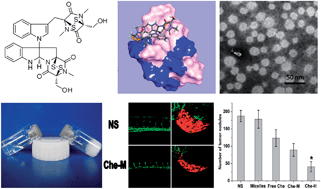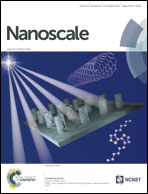Enhanced antitumor activity and mechanism of biodegradable polymeric micelles-encapsulated chetomin in both transgenic zebrafish and mouse models
Abstract
Chetomin is a promising molecule with anti-tumor activities in the epipolythiodioxopiperazine family of fungal secondary metabolites; however, strong hydrophobicity has limited its further applications. In this work, chetomin was encapsulated into polymeric micelles to obtain an aqueous formulation, and the chetomin loaded micelles (Che-M) exhibited small particle size and high encapsulation efficiency. When the concentration of copolymer was higher than the critical gelation concentration, the Che-M could form a thermosensitive hydrogel (Che-H), which was free-flowing sol at ambient temperature and converted into a non-flowing gel at body temperature. The molecular modeling study has indicated that chetomin interacted with PCL as a core, which was embraced by PEG as a shell. Che-M showed equal cytotoxicity with free chetomin, but the apoptosis inducing effects of Che-M were more significant. Besides, Che-M could increase the GSSG level, decrease the GSH level, and increase the ROS in CT26 cells. Furthermore, stronger inhibitory effects of Che-M were observed on embryonic angiogenesis, tumor-induced angiogenesis and tumor growth in transgenic zebrafish models. In addition, Che-M was effective in inhibiting tumor growth and prolonging survival in a subcutaneous CT26 tumor model. In a colorectal peritoneal carcinomatosis model, both Che-M and Che-H showed excellent therapeutic effects, but Che-H was more effective. In conclusion, Che-M and Che-H may serve as candidates for cancer therapy.


 Please wait while we load your content...
Please wait while we load your content...